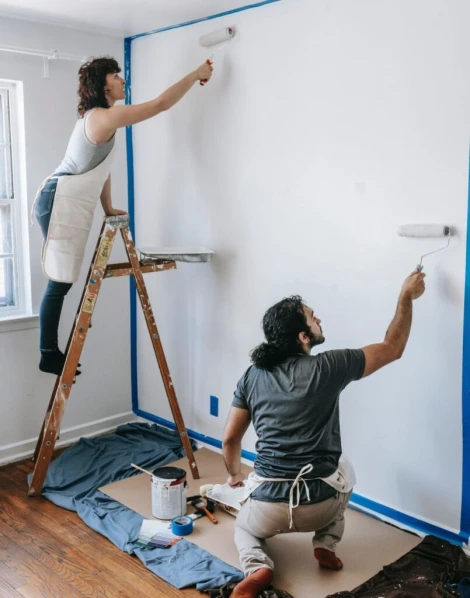
March is National Ladder Safety Month and while you’ve probably used one at home or work, there’s a good chance you may not know the proper safety protocols for ladder use. Here are some key safety procedures you can follow to prevent getting hurt while using a ladder.
read And Follow All The Labels/markings On Your Ladder.
Unless your ladder is homemade or the stickers were removed (avoid doing this), your ladder will have critical instructions on how to properly use it to avoid injury.
inspect The Ladder For Damage Before Use.
If the ladder is damaged in any way, it’s no longer safe to use. You will need to discard it or have it properly repaired.
inspect Your Surroundings For Hazards.
Locations with water/wet ground, electrical equipment, and un-solid surfaces are areas you should never place your ladder.
make Sure Your Ladder Is Free Of Slippery Materials.
Wet ladders or ladders covered in oil/grease/paint can cause you to lose your footing and fall.
always Maintain Three Points Of Contact With The Ladder.
Either keep two feet and one hand on your ladder at all times or keep one foot and two hands on the ladder. This will help maintain your balance.
don’t Stand On The Top Steps/rungs Of Your Ladder.
Unless otherwise stated by your ladder’s instructions, standing on the very top three steps can be an extremely dangerous fall hazard. This makes the ladder unstable and prone to tip over.
only Use A Ladder On A Stable Surface.
If you must place your ladder on an unstable surface, it will need to be secured at either the top or bottom to prevent displacement.
Don’t Place Your Ladder On Boxes, Barrels, Or Any Other Unstable Base To Achieve More Height.
If your ladder isn’t tall enough without something added beneath to make it taller, you need to find a longer ladder all together. A straight ladder used to access an elevated surface must extend at least three feet past the point of support.
Do Not Use A Self-supporting Step Ladder As A Single Ladder Or In A Partially Closed Position.
It can swing open suddenly, causing you to fall backward.
be Sure That Any Locks On Your Straight Ladder Are Properly Engaged.
If they aren’t, you could be shot downwards and fall while you’re trying to climb up.
Do Not Move A Ladder While A Person Or Equipment Is On It.
This could cause a person to lose balance and fall, or equipment to fall on someone.
While some of these rules may seem obvious, a reminder never hurts. To put things in perspective, according to the American Ladder Institute, over 100 people die in ladder-related accidents every year. Thousands of others suffer disabling injuries.
If You’ve Been Injured In A Ladder-related Incident Caused By Someone Else’s Negligence, Please Seek Legal Counsel. Jones And Swanson Offers Free Consultations And Is Ready To Get You The settlement That You Deserve. call Us Today.
Categories: Construction Accidents, Safety Tips, Workplace Accidents




